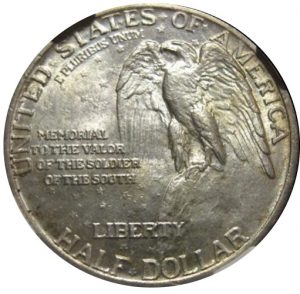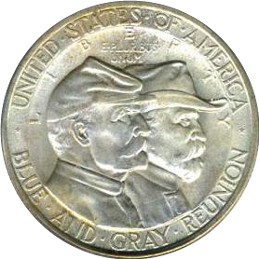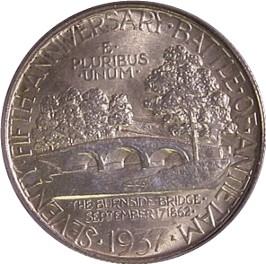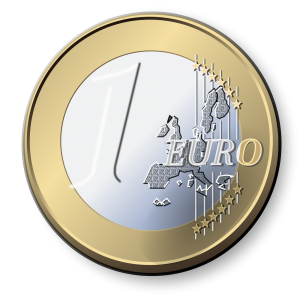Weekly World Numismatic News for August 8, 2021
Greetings from Athens, Georgia!
Athens is my first stop in a week-long commitment that I could not avoid. It will keep me from Chicago, but sometimes obligations take precedence. I am concerned about the Delta variant of the COVID-19 virus, and it is adding stress to the trip. But I will miss being at the World’s Fair of Money.As of today, it looks like my next show will be the Whitman Expo in Baltimore next November.
Please don’t think that the trip is all work. When I come to Athens, I am reminded of my youthful days as a student at Georgia. It is always interesting to see how the area has changed, but it is fascinating as to what remains the same. Tonight’s dinner came from The Taco Stand on Milledge Avenue. The sign inside said it has been open since 1977, and I was a freshman in 1978. My Baja Burrito was a taste down memory lane.
When I received my change, one of the dimes is dated 2021. It marks the first time that I found a 2021 coin in my pocket change. It has only taken 219 days and a trip to Athens to find my first 2021 coin. I was hoping to find the new Washington Crossing the Delaware quarter first, but a dime is a good find with the year more than half-over.
Last week, The National Sports Card and Collectors Convention (The National) held its annual show in Rosemont. According to the reports from many collector publications, the show was a rousing success. Although there were a few complaints about Cook County’s mask mandate, the reports said it did not take away from the show and called it a success. Sports cards have made a big comeback that even some of the over-produced cards of the 1980s and 1990s are selling. It has helped players find ways to be accessible to fans and willing to sell their wares to anyone who will pay.
Finding new avenues to attract new collectors and existing collectors to spend more is always a challenge. Sports memorabilia collectors are beginning to see what can happen with the new market in college sports’ Name, Image, and Likeness (NIL) rules. The NIL rules allow college players to sell their name, image, and likeness and remain eligible for college sports.
There was always a potential for better college players to earn money for NIL, but the NCAA rules prevented this. The NCAA suspended Georgia’s Todd Gurley for four games for selling his jersey to a collector in 2014. He used the money to take his girlfriend to dinner. And I won’t talk about Reggie Bush who’s situation is a travesty given the new rules.
Numismatics has to consider what it will take to expand the base. The base is not going to be expanded by recycling the Morgan and Peace dollars. You expand the base by embracing everything new and welcoming everyone that does not care about the old. There is so much fun to have with modern coinage that I think I will explore more over the next few months.
In the meantime, if you can make it to Rosemont for the ANA World’s Fair of Money, have fun. If you are like me and have Real World commitments that prevent you from going, stay tuned. There is a lot more to come!
And new the news…
 → Read more at sci-news.com
→ Read more at sci-news.com
 → Read more at carsonnow.org
→ Read more at carsonnow.org
 → Read more at thehindu.com
→ Read more at thehindu.com
 → Read more at bbc.com
→ Read more at bbc.com
Learning from History using Numismatics
Events this past week in Charlottesville, Virginia are forcing us to heed Santayana’s warning and look at our history to understand how we got here and why. Regardless of how anyone feels about the issues behind the divisions we cannot condone the use of violence to try to force opinions on others. This is what was tried in the past, which is why we have to learn from it because it seems to repeat itself time and again.
We should not hide our history behind political correctness. We need to put both the good and the bad out front for all to see. We need to learn from both and improve going forward. And this is not only about the Civil War. The United States has had a long record of abuses to the native tribes in the 19th century that we should be ashamed of. In fact, this country continues to abuse the native tribes and violate treaties that were designed to protect both sides. For an example, see the Dakota Pipeline project.
Americans want to celebrate their past and learn from the mistakes but are we continuing to make the same mistake? For every Civil Rights Act of 1964 Silver Dollar (2014), there are stories of the internment of Japanese-Americans during World War II whose only “crime” was to have Japanese ancestry.
Commemorative coins have always been used to help raise money for one cause or another. Members of Congress would bring the request to Washington from their home state and use the support of these bills to bargain with their fellow members to support other bills. It became so bad that the commemorative coins programs were ended following the 1954 release of the George Washington Carver Half Dollar.
During the early period of commemorative coins, Congress authorized the issuance of three commemoratives with themes tied to the Civil War. Two were created to memorialize battlefields and the other a memorial that is causing controversy today.
Stone Mountain Memorial Half Dollar
The 1925 Stone Mountain Memorial Half Dollar features the images of Generals Robert E. Lee and Stonewall Jackson. The monument was commissioned by the Stone Mountain Confederate Memorial Association to create a monument to the leaders of the south on the large granite face of the mountain. Both the coin and the monument was designed by Gutzon Borglum. Borglum was the same designer of Mount Rushmore.
The project began in 1916 by the United Daughters of the Confederacy. They were deeded the side of the mountain by the Venable Brothers, who used to mine the stones. Sam Venable used Stone Mountain as a central meeting place as part of the resurgence of the Ku Klux Klan.
The carved memorial was supposed to be a 12-year project. Aside from funding issues, Borglum, who was known to associate with the Ku Klux Klan, quit the project in 1925. That lead to having many problems with funding and maintaining sculptors throughout the years. After the mountain was purchased by the State of Georgia in 1958, there were two attempts to complete the memorial. It was finally completed in 1970.
Congress authorized a production of 5 million coins. These coins were struck in batches of 500,000 at a time in Philadelphia. The coins were sent to the Stone Mountain Confederate Memorial Association which offered them for sale. Despite brisk sales, they only sold about 1.3 million coins. The balance of the last run was returned to the U.S. Mint to be melted.
Battle of Gettysburg Half Dollar
The 1936 Battle of Gettysburg Half Dollar issued to commemorate the 75th anniversary of the Civil War’s bloodiest battle. The obverse features generic the profiles of Union and Confederate soldiers with the words “Blue and Gray Reunion” under the portraits.
During this time, the Gettysburg Battlefield Memorial Association had been transferred from the War Department to the National Park Service for administration. But the area needed additional infrastructure and support. As part of the plans to commemorate the 75th anniversary of the Battle of Gettysburg, the commemorative coin was used to Pennsylvania the necessary money. As with many of the commemorative coins issued during The Great Depression, the program fell short.
Congress authorized a production of 50,000 coins. These coins were struck at Philadelphia and sent to the Pennsylvania State Commission which offered them at $1.65 each. They sold just under 27,000 coins. The rest were returned to the U.S. Mint to be melted.
Battle of Antietam Half Dollar
The 1937 Battle of Antietam Half Dollar was issued to commemorate the 75th anniversary of the battle which General Geroge B. McClellan preventing the invasion of Maryland by General Robert E. Lee’s Army of the Potomac near Antietam Creek. Although Lee’s army was able to withdraw back to Virginia, President Abraham Lincoln relieve McClellan because it was felt that the battle did not defeat Lee’s army.
Similar to the Gettysburg Half Dollar, Maryland proposed a commemorative half dollar in order to improve the infrastructure around the battlefield and cemetery. One of the differences between Antietam and Gettysburg was the network of roads built around the battlefield area that Sharpsburg, the main city along Antietam Creek, was a gateway across the Potomac River into these western areas even before the Civil War. As a natural crossing point, Lee’s army was going to use it to attack the Union from the west.
Congress authorized a production of 50,000 coins. These coins were struck at Philadelphia and sent to the Washington County (Maryland) Historical Society which offered them at $1.65 each. They sold about 18,000 coins. The rest were returned to the U.S. Mint to be melted.
Learning from History
During the times that these commemorative coins were proposed, the commemoratives were met with little interest and even with some disdain that the U.S. Mint would be required to produce so many commemoratives.
Specifically, regarding the Stone Mountain Memorial half dollar, a review of newspaper archives does not mention an outrage over the production of the coin. However, there was plenty of stories about the Jim Crow laws. Predictably, northern newspapers were against them and southern newspapers defended them.
Stone Mountain itself has had an interesting history even after the passage of the Civil Rights Act. In the 1980s, Daniel Carver, former Grand Dragon of the “Invisible Empire, Knights of the Ku Klux Klan” donated money to the Stone Mountain Memorial Association to upgrade the park. In return, the organization was going to rename the park in his honor until protests convinced the organization otherwise. Carver would go on to make a spectacle at the park during the week before the 1988 Democratic National Convention that was held in Atlanta.
History is addressed to understand the context. It is easy to look back and ask, “What were they thinking?” By understanding the history, it does provide an insight into that answer.
But Continue to Collect History
History is a great teacher but it is not enough to have the words. We build museums with artifacts of history so that we can learn from the past. We collect artifacts of history so that we can preserve the past. We study these artifacts to understand “What were they thinking” because it is important to the context of history.
Whether it is for curiosity, pride, interest in the subject, or the thrill of the chase, collecting historical artifacts is not only educational but also vital to ensure we do not forget the history regardless of whether it is good or bad.
If your passion is classic commemoratives, make sure you include a Stone Mountain Memorial Half Dollar in your collection.
If your passion is Confederate currency, some were well made and will make for an interesting collection.
If your passion is military medals and awards of the Civil War or of the Confederacy, make sure you find as many as possible. Document what your find. Research their provenance. Understand what they mean because it is important that history is remembered.
Whatever you collect, share it with the rest of us because we all need to learn about history so that we do not repeat the mistakes of the past.
Adding Collecting Guides
 Over the last few weeks, I have been working on a few writing projects that include primers about collecting numismatics. While some of these articles have allowed me to repurpose blog posts, I have had to create some content not posted before.
Over the last few weeks, I have been working on a few writing projects that include primers about collecting numismatics. While some of these articles have allowed me to repurpose blog posts, I have had to create some content not posted before.
In the past, I posted a few including the series on small dollars and about Seated Liberty Dime Varieties. They were posted as regular articles because I thought they would be of general interest.
A few may not make for exciting reading but could be used as a reference for those interested. Last week, I added one of those articles rewritten for the blog and posted it under the Collector’s Reference menu.
“A Collector’s Guide to Understanding U.S. Coin Grading” is a simple overview of coin grading. It starts with a short narrative that explains the origin of coin grading and its standardization. It is not an extensive overview. It is just the basics to give a collector an idea of the evolution.
This is followed by three tables:
- Coin Grading Scale correlates the words with the expected grade that might be printed in an advertisement or on a grading service label along with a definition of what that grade means. These definitions were adapted from The Official American Numismatic Association Grading Standards for United States Coins edited by Kenneth Bressett. I own the 6th Edition but I am sure it has not changed much between then and the 7th Edition!
- Strike Quality is the attributes of a coin that signifies the strike and the wearing of the dies. Each of these designations begins with “Full” like “Full Bands” or “Full Steps.”
- Surface Quality is those grade attributes assigned to the quality of the coin’s fields. These are for proof coins designated as “Deep Cameo” or a business strike exhibiting “Proof Like” surfaces.
It ends with a section on a summary of the “eBay Coin Grading Policy.” There are aspects of their grading policy I did not know until I read eBay’s rules carefully.
If you find these types of write-ups helpful, let me know. I can convert some of the other guides into posts for the community.
Weekly Numismatic World News for August 13, 2017
The reasons why counterfeiters are successful is that people do not pay attention. Even when people do allegedly pay attention, it is almost as if the brain is not engaging.
A report from the U.K. says that people returning from mainland Europe are trying to pass euros because they look like the new £1 coin.
- Obverse of the new 2017 12-sided £1 coin
- Standard obverse of the €1 coin
Although both coins are bi-metallic, the new pound coin is 12-sided meaning that there are 12 distinct “corners” that should be able to be felt on the coin. The euro is round with a milled edge that should have a different feel.
Even though the outer ring of both coins is made of nickel-brass, the ring of the euro coin is thinner than the outer ring of the new 12-sided pound coin.
The final clue in telling the difference is that the pound coin, like all legal tender coins minted by the Royal Mint, the coin features the portrait of Her Majesty Queen Elizabeth II while the euro features a map of Europe and the denomination.
The cost for not paying attention is a loss of about 9 pence since one euro is worth about 91 pence.
And now this week’s news.
Two of the rarest one cent coins ever made have sold at auction for a combined total close to half a million dollars. A 1943 Lincoln Penny fetched $282,000 while a 1792 Birch Cent which had been thought to have been lost for 130 years sold for $211,500.
HOLDREGE — Robert Kinkaid of Lexington had worked to get the book “Forgotten Colorado Silver” published since 1982. His efforts paid off, and the book was published this year. One of the authors, Robert D.
The new £5 Prince Philip coin that has been released to celebrate his 70 years of service could be worth a fortune in the future. The coin costs £13 to pre-order through the Royal Mint and will be shipped in late August.
UK’s Royal Mint will supply Argentina with 150 million peso coins, after the institution won a contract to assist with the minting of a new coin series. Announced on social media by UK chancellor Philip Hammond, the mint will work closely with its Argentine counterpart – Sociedad del Estado Casa de Moneda – to produce blanks for the new coin series.
Holidaymakers returning from Europe are trying to pass off euro coins as the new pound coins in British shops because they look so similar. Shopkeepers are warning staff to be vigilant after noticing the huge increase in one euro coins being found in takings.
His initials are on every British coin minted since 2015, but who is the Jiu Jitsu enthusiast who designed the Queen's head, despite never having met her? He is an artist whose most famous portrait has been reproduced billions of times, and you probably have one in your pocket right now.
This full-dimensional 3D coin weighs 100 grams and is made of pure silver and there will be 251 pieces available for sale in the Indian market.
The federal government plans to pay tribute to Georgia’s largest barrier island by issuing a special coin.
Lack of leadership at the U.S. Mint
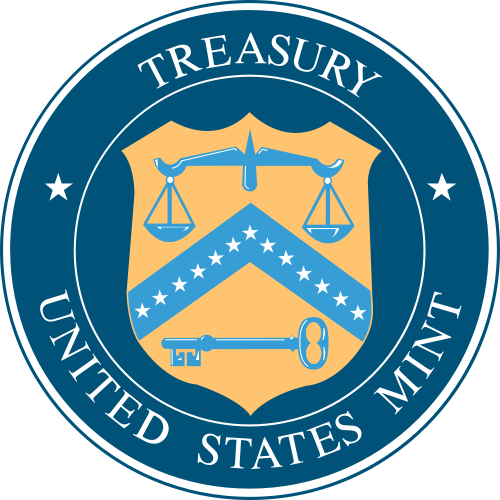 Following the sell out of the 225th Anniversary Enhanced Uncirculated Coin Set, a few readers asked if I was going to post a comment. I declined to let the rest of the industry have this discussion. I would rather have a discussion about a different issue related to the U.S. Mint: the lack of leadership.
Following the sell out of the 225th Anniversary Enhanced Uncirculated Coin Set, a few readers asked if I was going to post a comment. I declined to let the rest of the industry have this discussion. I would rather have a discussion about a different issue related to the U.S. Mint: the lack of leadership.
Since the resignation of Edmund Moy as of January 9, 2011, the U.S. Mint has not had a permanent director. Even though Moy’s term would have expired on September 5, 2011, there has been no permanent leadership as required by law.
Since Moy’s departure, there have been three people acting as director and two attempts at nominating a director that was not acted upon in the Senate.
- Bibiana Boerio was nominated in Sept 2010 but never acted on by the Senate.
- Rhett Jeppson was nominated in July 2015 and even had a hearing, but his nomination was not acted on in the Senate.
As of this post, the U.S. Mint has not had a permanent director for 2,407 days or 6 years, 7 months, 3 days and counting. This appears to the longest vacant position in the federal government.
In the past, this seemed to be a good thing because the government professionals taking the reigns of leadership seems to have made decisions that did not appear to hurt collectors. That was until the 225th Anniversary Enhanced Uncirculated Coin Set was sold without household limits.
Given the current state of the government where it is estimated that over 40-percent of the positions open for appointments, including those that do not require Senate confirmation, maybe this is something we have to live with regardless of consequences.
Sirius Collecting
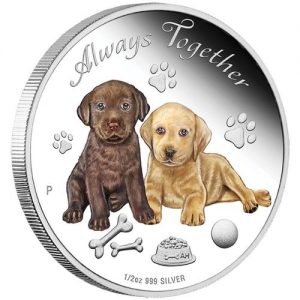
Always Together 2016 ½ oz Silver Proof Coin
(The Perth Mint)
Sirius is the brightest star in the constellation Canis Major (big dog). Because ancient Romans thought Sirius contributed to the heat and humidity, this period would be called the Dog Days.
Astrologically, the Dog Days begins on July 3 and runs through August 11.
Today’s society has attached many meanings to the Dog Days of Summer. Usually, it is associated with the time following July 4 through whenever school starts. In baseball, it is the jockeying for position to get ready for the pennant races. Football begins training camps, politicians warm up to run for office (sometimes a year early), and the temperatures are rising with the east getting too wet and the west not getting wet enough.
On the numismatic calendar, the Dog Days begin after the World’s Fair of Money and leads up to the start of school. Although this period is changing as some school districts are now starting earlier in an attempt to hedge against the potential for weather-related closings during the winter months.
With Congress on vacation, it also means that any numismatic-related legislation will remain in committee until they return.
Leading into the fall season, some mints will release some new coins, but these will be non-circulating legal tender (NCLT) coins. Very few significant releases will be made in the next few weeks leaving some of us to clean off the top of our desks and organize the collection (guilty as charged).
But your intrepid numismatic blogger is here ready to comment on whatever comes to mind… or a topic you suggest. I do take requests!




